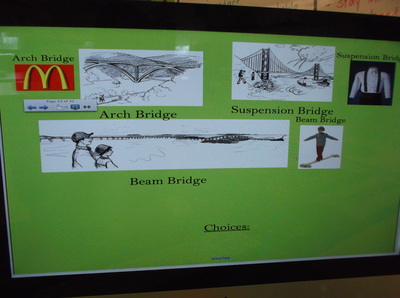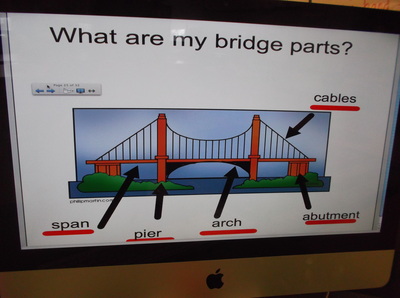As civil engineers, second graders are specifically focusing on one structure this branch of engineering focuses on, and that structure is a bridge. Bridges come in many shapes and styles.
There are three distinct bridge types: beam, arch, and suspension. Beam bridges are the weakest and are good for spanning short distances. Suspension bridges provide the most support over long distances, yet are they are more expensive to build. Each bridge has special parts that help keep the bridge's shape and structure. Second graders are becoming bridge experts!
There are three distinct bridge types: beam, arch, and suspension. Beam bridges are the weakest and are good for spanning short distances. Suspension bridges provide the most support over long distances, yet are they are more expensive to build. Each bridge has special parts that help keep the bridge's shape and structure. Second graders are becoming bridge experts!


 RSS Feed
RSS Feed